Forget the airplane, the automobile, and the iPhone. The greatest American invention in history is hands down the television. Not only has it given us a way to see the world without leaving our living room, but it was also an electronic babysitter long before the tablet and gave families something to do at dinner other than talk to each other. Over the 70-plus years TV has been around we’ve seen thousands of shows, set all kinds of places around our great land. We took a look through TV history and came up with the best scripted show set in every state.

Alabama
Hart of Dixie
The CW, 2011-2015

Photo: The CW
This show was classically CW, a funny, occasionally touching drama that never got too heavy and was always easy to watch. The plot centered around Zoe Hart, a big-city New Yorker who’s drawn to tiny Bluebell, Alabama, when she inherits her previously unknown father’s medical practice. Zoe finds herself at odds with her surroundings at first, then accepts them, then ultimately falls in love and gets married. Predictable? Yes. But unless college football can be considered a TV series, there’s not a whole lot of competition coming out of Alabama.
Alaska
Northern Exposure
CBS, 1990-1995
This early-90s CBS comedy was the quirkiest show of its era, showcasing the kinds of castoffs, loners, and all-around eccentrics that populate America’s most sparsely populated state. Like many shows, it focused on a New Yorker thrust into a rural environment, this one chronicling Dr. Joel Fleishman’s journey into Sicily, Alaska. There he meets a crusty retired astronaut, a freewheeling radio DJ who later became famous as Sex and the City’s Aiden, and a plucky bush pilot named Maggie who feuds with Joel over several seasons of sexual tension. The whole show was filmed in Roslyn, Washington, and for many years the town became a popular day trip for tourists visiting Seattle.
Arizona
Medium
NBC/CBS, 2005-2011
Last Man on Earth gets a solid honorable mention here, but the longevity of Patricia Arquette’s vehicle about a mom who can talk to the dead and see past events gets it the Arizona nod. Arquette’s character Allison DuBois helps the purposefully misspelled Mariposa County District Attorney solve and prevent crimes. Sometimes encountering cops who don’t believe in her abilities, often “playing by her own rules” when she foresees a crime that is about to happen, and struggling with three daughters who seem to have the same gift.
Arkansas
Evening Shade
CBS, 1990-1994
One of the more under-appreciated shows of the Linda Bloodworth-Thomason dynasty was this charming comedy that starred Burt Reynolds as Wood Newton, a retired football player returning to his hometown to coach. Think of it as a kinder, gentler Eastbound and Down, where Wood took the perennially losing Evening Shade high school football team and made it a winner. The show earned Reynolds his lone Emmy win for Lead Comedy Actor in 1991.
California
Arrested Development
Fox, 2003-2006; Netflix, 2013-present

Photo: Fox
Because nearly every third TV show is set in California, the list of potential winners here is long. But Arrested Development did a lot for television, introducing us to the hand-held serial concept later adapted by The Office and Parks and Recreation while perfecting the straight-man-surrounded-by-lunatics concept led by Jason Bateman’s Michael Bluth. The show managed to capture perfectly the Orange County ethos of delusional wealth and conspicuous consumption without getting too cliché like other OC-based series of the time. It showed the world the delicacy that is the Newport Beach frozen banana and ensured the world will never hear The Final Countdown the same way again. While the reboot is still questionable, the original is not only the best show from the Golden State but also the most Californian. And for that, it narrowly edges out Fuller House.
Colorado
South Park
Comedy Central, 1997-present
Ignore for a moment that people legally allowed to drink were born after this show premiered during the Clinton administration. South Park has become a mouthpiece of American culture over the past 22 years and perhaps the country’s single greatest source of instant satire. The collection of crudely drawn, foul-mouthed kids in a little Colorado town have sent up everything from Somalian pirates to AIDS to radical Islam, showing that if you can manage to offend everyone, then you’ll ultimately offend no one. It also launched the careers of Trey Parker and Matt Stone, who among other things gave us Book of Mormon.
Connecticut
Gilmore Girls
The WB/CW, 2000-2007
Gilmore Girls is sort of like the cilantro of TV shows — most people generally like it, some are too obsessed, and then there’s a small segment of the population who hates it no matter how it’s presented. The quick-witted, bantering, play-like pace of the show has become a trademark for creator Amy Sherman-Palladino, who won an Emmy for it this year with The Marvelous Mrs. Maisel. But her original creation chronicling single mom Lorelai Gilmore and her gifted daughter Rory in their small fictional town of Star’s Hollow has gained a worldwide cult following. So much so that it draws fans from around the globe to an annual Gilmore Girls fan festival in Kent. As for the limited-series Netflix reboot, we won’t talk about that.
Delaware
The Pretender
NBC, 1996-2000
Part Quantum Leap, part The Fugitive, this show followed the adventures of Jarod, a man who can master complex skills almost instantly and impersonate a person in almost any job. He’s captured as a child by an evil research center called, appropriately, The Centre. Though throughout the show’s four-year run Jarod found himself everywhere from Las Vegas to Miami to Pittsburgh, impersonating people to help solve crimes and right wrongs, the Centre is in Blue Point, Delaware.
Florida
The Golden Girls
NBC, 1985-1993

Photo: NBC
Yeah, yeah, yeah, plenty of good cases can be made for the moody pastels of Miami Vice, or the cunning brutality of Dexter, or Silk Stalkings. But did any of those include a SINGLE St. Olaf story? No. The answer is no. And when it comes to shows set in Florida, nothing will ever top the Golden Girls. It was not only the first comedy to feature an all-female ensemble cast, but it was also the first to show that women over 50 can have a sex life. It also broached topics like acceptance of gay family members, immigration, homelessness, and the proper way to serve cheesecake. And above all else, it was just downright bitingly funny, with quick wit and clever jokes that still hold up 30 years later. It earned Emmys for all the principal actors and for the show itself, a feat that will probably never be duplicated by a 30-minute sitcom.
Georgia
Dukes of Hazzard
CBS, 1979 – 1985
Most people who refer to a pair of unreasonably high shorts as “Daisy Dukes” have no idea they are referring to shorts worn by a TV character named Daisy Duke, a buxom blonde cousin to the good ‘ole Duke boys, Bo and Luke. These two acted as sort of hilljack vigilantes, fighting against the evil Boss Hogg and the corrupt sheriff he controlled. The show was probably best known for the ramp-assisted aerial stunts done by the show’s iconic car, General Lee, and for the freeze-frame narration asking, “How them Duke boys gonna find their way outta this?”
Hawaii
Magnum, PI
CBS, 1980-1988
Even though Hawaii Five-0 has managed two full series, have you ever seen anyone dress up as Steve McGarrett? Did you even know the main character’s name was Steve McGarrett? Magnum, on the other hand, is a Hawaii icon, with his trademark moustache, Hawaiian shirt, Detroit Tigers hat, and way-too-short shorts. The show was more than just Tom Selleck looking uber-80s, though; it was a pretty gripping adventure drama that followed Magnum as he investigated people and crimes around the island with the help of his butler Higgins. Like a funnier, cleaner Dog, The Bounty Hunter. And it gave producer Donald Bellisario is bona fide hit before he went and made Quantum Leap.
Idaho
Wayward Pines
Fox, 2015-2016
On the surface, the premise of this short-lived Fox sci-fi vehicle sounds riveting: A secret service agent (played by Matt Dillon!) heads to a small Idaho town to investigate the disappearance of two fellow agents, then discovers he can never leave. Because Wayward Pines, you see, is surrounded by an electric fence, and anyone who tries to escape is punished by public execution. While the tourism department could definitely use some pointers, it does manage to create a fully dystopian paradise in rural Idaho. Sadly, the show did not live up to its nail-biting concept and lasted only 20 episodes, but the Idaho competition is thin.
Illinois
Roseanne
ABC, 1988-1997

Photo: ABC
Though networks actually required every new drama from 2014-2017 to include the word “Chicago” in the title, and we’d be remiss not to tip our No Ma’am hats to Al Bundy, no show captured blue-collar midwestern life quite like Roseanne. The show was the first family sitcom to get a little nasty, delving into issues working-class families dealt with like involuntary unemployment, teen sex, and unplanned pregnancy from a funny, but ultimately serious, angle. The final few seasons got real weird, and let’s not even talk about the short-lived reboot that nearly tanked the legacy of the show, but the Conners of Lanford were the most dynamic and painfully real sitcom family of all time, representing Illinois better than any group of civil servants from Chicago.
Indiana
Parks and Recreation
NBC, 2009-2015
The scenes of Leslie Knope trying to talk sense to angered masses of comically misinformed Pawneeians are hilarious-but-sad harbingers of the political climate that came after. And those are only in a handful of episodes. This show picked up the office mockumentary baton from The Office and ran with it, launching the careers of Chris Pratt and Aziz Ansari in the process. But perhaps its most impressive feat was explaining away how Pratt went from lovably-doughy frat boy to Jurassic World-ripped in one off-season with a simple, “I stopped drinking beer.”
Iowa
Drexell’s Class
Fox, 1991-1992
Those old enough will have vague recollections of this show playing in the background while they did their homework between The Simpsons and Beverly Hills, 90210. Fox obviously thought it had a winner, slating this Dabney Coleman vehicle between its two biggest stars back in 1991. It told the story of a crooked Wall Street financier teaching school in rural Iowa to pay back taxes, and Coleman and the ensemble cast of children were actually often funnier than the cartoon that preceded them. But since most of the audience was, in fact, killing time between shows while this aired, and Mr. Drexel lasted only one season.
Kansas
The Phil Silvers Show (Sgt. Bilko)
CBS, 1956-1959
Nat Hiken was one of the more underrated comedic minds of the 20th century, who in addition to Car 54, Where Are You? also created this showcase for the immensely talented Phil Silvers. If you didn’t see the 1996 Steve Martin film adaptation, the show centers around a Damon Runyan-esque Army sergeant at Ft. Baxter, Kansas. Bilko was more concerned with bilking money out of his colleagues, the Army, and anyone else he could find than doing any actual work, and he often got his vastly loyal soldiers to help him in his schemes. The role earned Silvers an Emmy in 1955 and earned itself two Emmys for Outstanding Comedy Series.
Kentucky
Justified
FX, 2010-2015
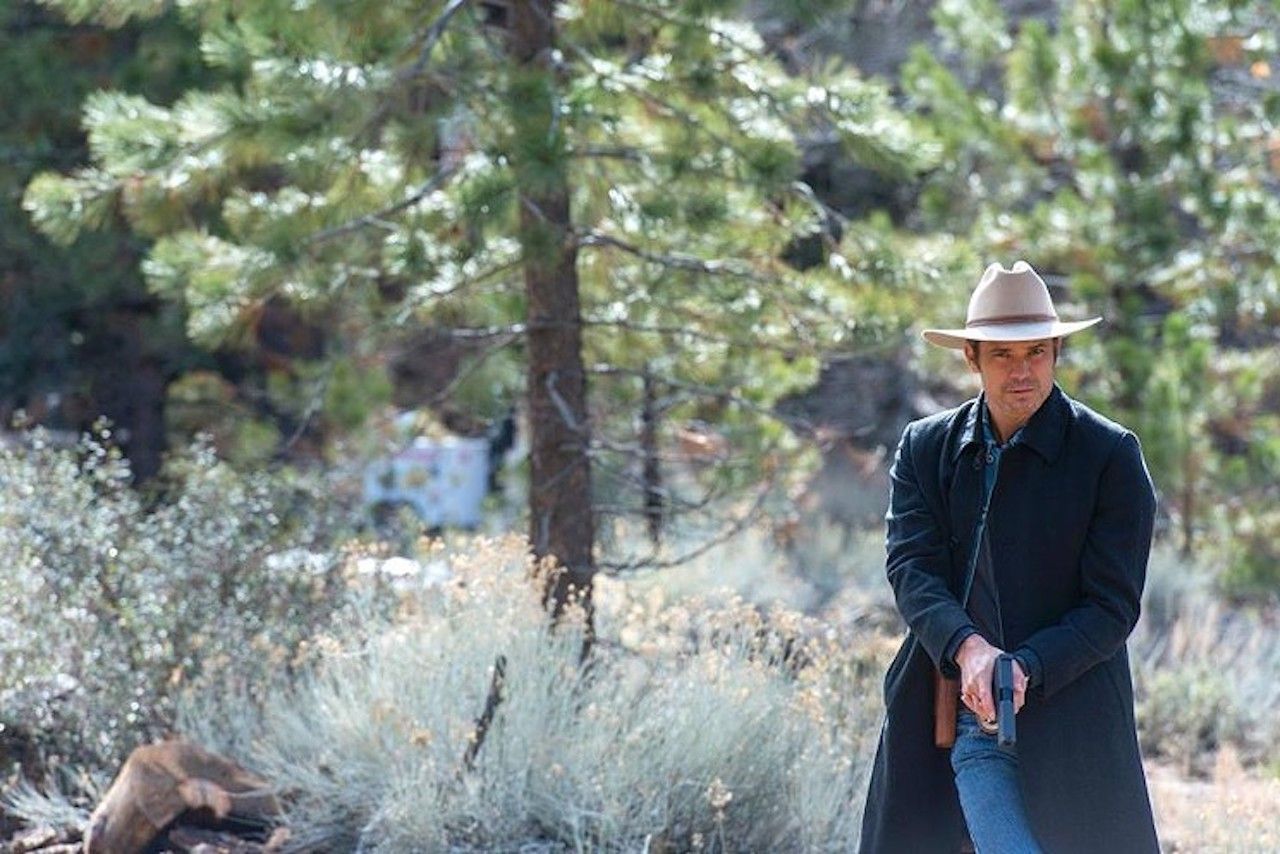
Photo: FX
Though it never got to the binge level of some other FX shows, this story of a US Marshall bringing rough justice to the coal mining towns of Kentucky was still one of the most critically acclaimed programs of its era. Based on Elmore Leonard’s book Fire in the Hole, it chronicled Raylan Givens, played by Timothy Olyphant, who was reassigned from Miami to his hometown in rural Kentucky. As one might expect, it depicted Givens fighting his way through the addicts, junkies, and backwoods criminals and earned two Emmys for Margo Martindale and Jeremy Davies.
Louisiana
True Blood
HBO, 2008-2014
Back in the late-2000s, vampire-mania was in full swing. Twilight ruled the box office and HBO premiered this drama starring Oscar winner Anna Paquin as an eccentric, telepathic waitress in small-town Louisiana. True Blood was based on The Southern Vampire Mysteries, books that centered on a world where a synthetic blood called TruBlood allowed vampires to become part of mainstream society. The show depicted vampires’ struggles for equal rights, using clever terms like “coming out of the coffin.” While it was still pure late-2000s vampire sci-fi — complete with a love story between Paquin’s character and a vampire, like, seven times her age — True Blood still had an underlying morality message that hit home for many.
Maine
Murder, She Wrote
CBS, 1984-1996
The biggest mystery of this show wasn’t the countless murders, or why people ever invited Jessica Fletcher ANYWHERE after realizing every time she showed up someone got killed. It’s how Sheriff Amos Tupper kept his job when little Cabot Cove, Maine, saw almost a homicide a week for 12 years, and he always needed a civilian to help him solve them. Plot holes aside, this show starring Angela Lansbury as a mystery writer who solves crimes drew 30 million viewers a week, set records for Golden Globe nominations, and won Lansbury four Emmys. A lot of people had to die to make it happen, but it was worth it to keep us entertained on Sunday nights for over a decade.
Maryland
Homicide: Life on the Street
NBC, 1993-1999
Before Barry Levinson created one of America’s first binge-worthy shows with The Wire, there was Homicide, a criminally low-rated Baltimore cop drama that made NYPD Blue look like Blue’s Clues. Homicide might have showcased the best acting of any cop drama, from the perpetually beleaguered Lt. Al Giardello, played by Yaphet Kotto, to the comical Richard Belzer, to the intense-then-brain-damaged Frank Pembleton, played masterfully by Andre Braugher. Its crowning achievement was an episode in which Robin Williams plays a tourist who watches his wife die during a daytime robbery outside the then-new Camden Yards. If you don’t cry watching that performance, you’re dead inside.
Massachusetts
Cheers
NBC, 1982-1993
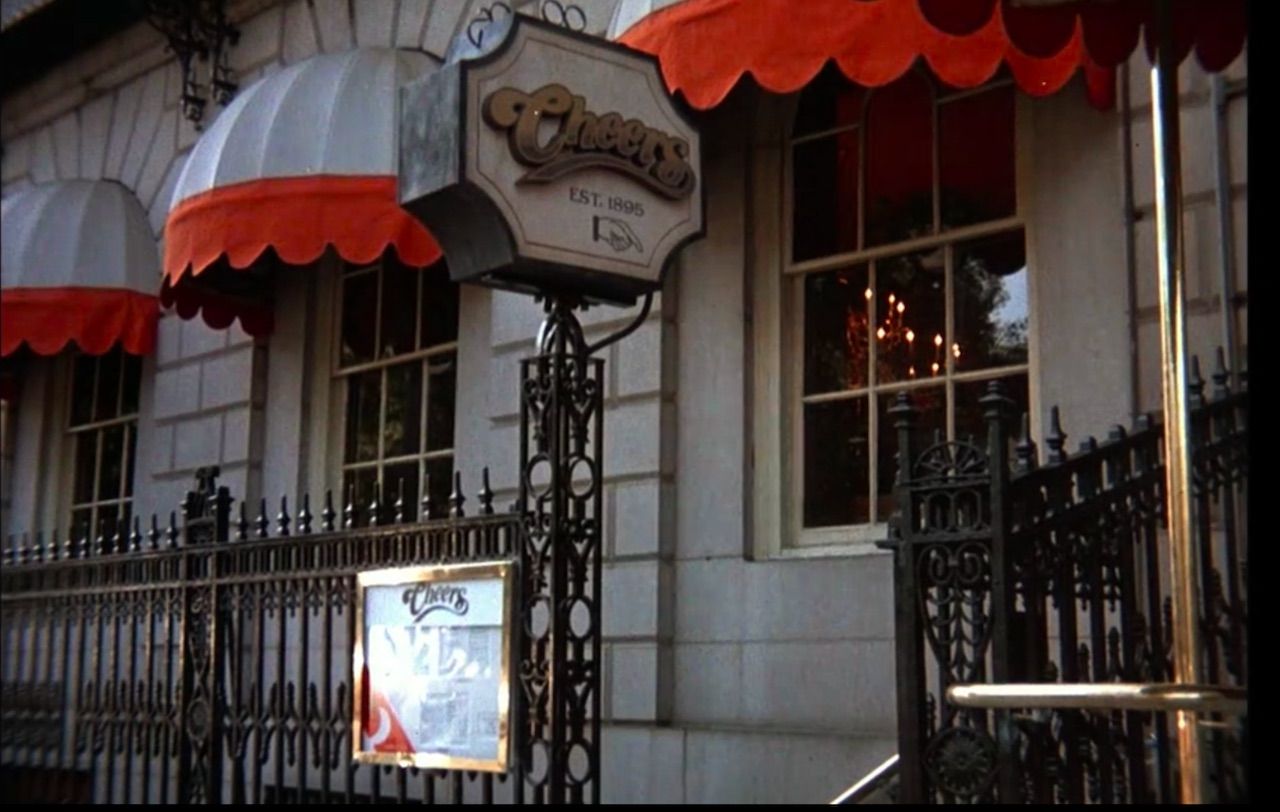
Photo: NBC
To our knowledge, this is the only television show to launch a worldwide chain of spinoff bars, none of which look even remotely like the TV set or the Bull and Finch Pub in Boston. Beyond that, the 11-year run also launched the careers of Woody Harrelson, Kirstie Alley, and Shelley Long and made Ted Danson a household name. Cheers had so much influence it became part of the language, where bar regulars are referred to as “The Norm” of whichever establishment they frequent and masters of minutia are often called “a real Cliff Clavin.” It was also where we first met Dr. Frasier Crane, who had a little success of his own later on in Seattle.
Michigan
Home Improvement
ABC, 1991-1999
Tim “The Toolman” Taylor was sort of the 1990s icon for old-school dad, a guy who built things by hand and enjoyed beer, football, and chatting with his neighbor across a fence. In real life, he’d have probably ended up a little like Tommy Lee Jones character in No Country for Old Men, standing around with Al talking about how the world has passed them by. But in TV-land, he’s still a lovable dad with a hit show who never seems to be finished building his house, despite his wife’s perpetual eye rolling. It’s a classic TV formula that Tim Allen carried for almost an entire decade, and that kind of longevity must be respected. Also, it gave the world Justin Taylor Thomas. So there’s that.
Minnesota
The Mary Tyler Moore Show
CBS, 1970-1977
The word “groundbreaking” gets thrown around a lot when describing TV shows of the ‘70s and ‘80s, but this one that centered on a single, ambitious woman focusing on her career as a news producer rather than finding a husband was a first for prime time. It told the story of Mary Richards, who heads to Minneapolis after a failed relationship and ends up a producer of the evening news. The ensemble cast was one of the best ever, with Ed Asner, Valerie Harper, Cloris Leachman, and Betty White joining Moore. It earned three straight Outstanding Comedy Emmys and three Emmys for its lead actress.
Mississippi
In the Heat of the Night
NBC/CBS, 1988-1995
Cop shows in the 1980s didn’t often delve into issues of racist police forces in the rural south, but this show based on a 1965 book and 1967 movie gave a little glimpse into what black police officers faced when working in places like fictional Sparta, Mississippi. The story of Detective Virgil Tibbs, recruited to Sparta to help counter the local cops’ reputation for racism and incompetence is fascinating. His interactions Chief Gillespie, where Tibbs shows frustration when Gillespie sees progress, are an early demonstration of our disconnect when it comes to racial issues. But beyond that, the show made the police, and life in rural Mississippi, human for those who knew nothing about it.
Missouri
Ozark
Netflix, 2017-present

Photo: Netflix
Though the good-guy-caught-up-in-a-nasty-world premise was almost perfected by Breaking Bad, Ozark manages to do in a season what it took that show nearly three to accomplish: Hate the main character. Jason Bateman’s money-laundering Marty Byrd is both sympathetic and loathsome, a normal guy who gets greedier than he should and refuses to take what he has coming to him. The show also deftly shows the bizarre local culture of rural Missouri, an area not often credited with having terrifying, opium growing hillbillies. Ozark combines the terror of Breaking Bad’s cartels with the backwater lawlessness of Deliverance, and though it’s only through two seasons, it’s easily the best show ever set in the Show Me State.
Montana
Buckskin
NBC, 1958-1959
For a state so big and beautiful, alarmingly few TV shows have been set in Montana. The only one worth mentioning was this 1950s TV western about a 10-year-old boy whose widowed mother runs the town boarding house in fictional Buckskin, Montana. For such a brief run, the show put out an impressive 39 episodes, spurring a rebirth of reruns in 1965.
Nebraska
Heartland
CBS, 1988-1989
Allegedly, ABC is set to debut a new series called Bless this Mess this year, using the tried-and-true New Yorker-moving-to-a-small-town formula to try and pump some life into the uninspiring list of TV shows set in Nebraska. For now, the highlight was this short-lived 1980s sitcom about an old farmer who moves in with his kids after losing his farm. Hilarity did not exactly ensue as the show barely made it through a season after it was brought in as a 1988 mid-season replacement.
Nevada
CSI:Crime Scene Investigators
CBS, 2000-2015
During the 2000s, it was pretty much impossible to turn on your television without a forensic police drama filling the screen. The reason was CSI, the original of the franchise that focused on entomologist Gil Grissom and his team of investigators who used science to solve crimes on the Las Vegas strip. The show taught us more about insects and DNA mapping than we ever thought we’d know, each week bringing a new crime scene inexplicably filled with bodily fluids. Not only did it birth a popular Miami spinoff, it also launched the forensic drama genre for the rest of the decade and stands as one of the cornerstone shows of the last 20 years.
New Hampshire
Stan Against Evil
IFC, 2016-2018
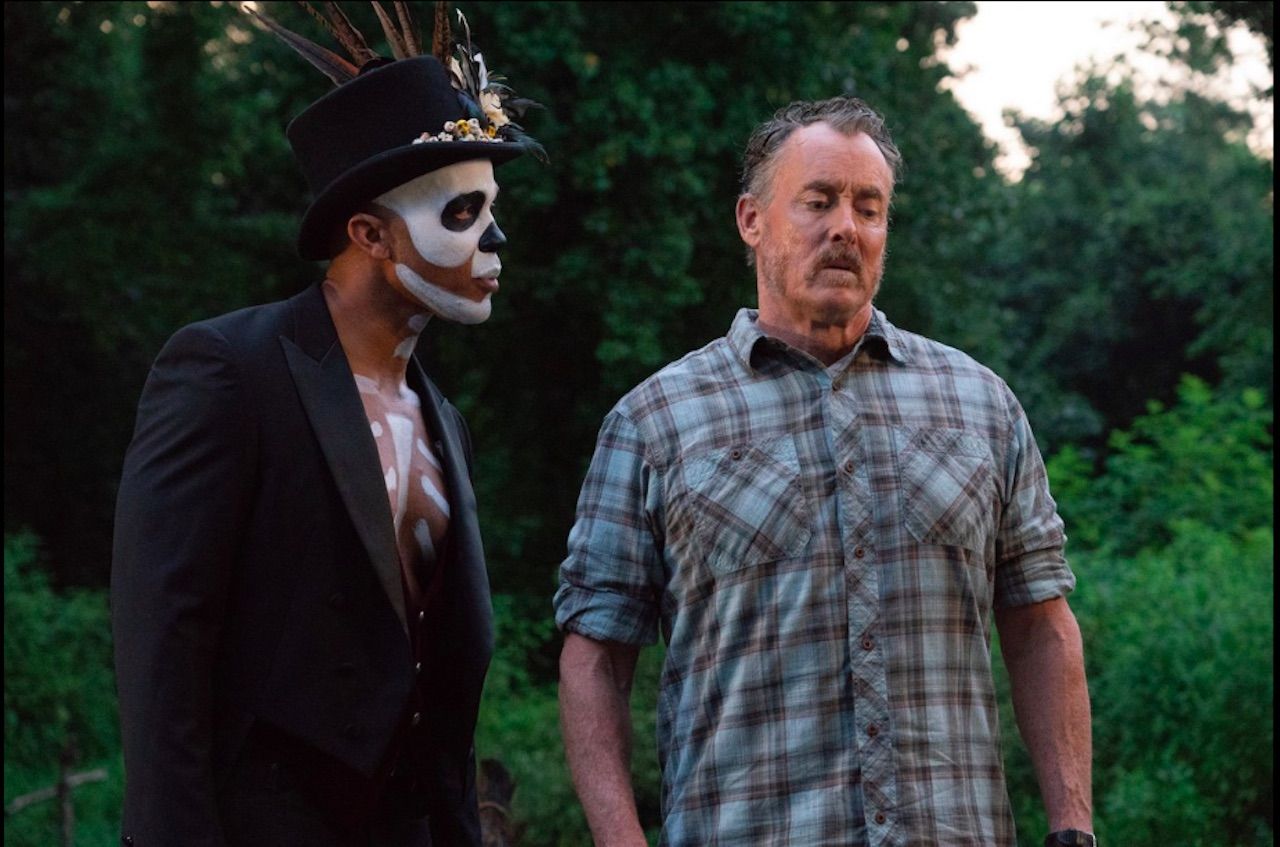
Photo: IFC
If that handful of Breaking Bad episodes set in a remote New Hampshire cabin could qualify as a full show, it would easily be the winner here. But lacking a full season, we’re going with this Horredy set in a fictional New Hampshire town built on an old witch-burning site. It stars Dr. Cox from Scrubs as a recently removed town sheriff who finds himself fighting ghosts and demons bent on revenge against the police. He joins forces with the new sheriff to, as the title might suggest, battle evil. Over two seasons, they were mostly successful.
New Jersey
The Sopranos
HBO, 1999-2007
A touching family drama… about mobsters? David Chase somehow made it work, creating a Hollywood mob legend topped only by The Godfather. If you never watched, the show followed mob boss Tony Soprano, his family, and his “co-workers” as they introduced words like “whacked” and “goomah” to the American vocabulary. It was the first gangster vehicle to look at the human side of the mob, following Tony on visits to his therapist Dr. Malfi and through family squabbles with his wife Carmela and his kids Meadow and Tony Jr. Though the inexplicable ending left a lot of longtime fans hanging, The Sopranos — which aired Sunday nights — may have been the last great appointment television show.
New Mexico
Breaking Bad
AMC, 2008-2013
Really a one-horse race in the Land of Enchantment where this series about a high school chemistry teacher who teams up with a nefarious ex-student to make the best meth in the world is considered by some the best show in history. Though it took a season or two to get rolling, once it did each episode included a fist-clenching, “How the F is he gonna get out of this one” moment that was solved in the most creative ways. In addition to stellar writing and gripping plots, the show also had an acute attention to detail, using its setting in Albuquerque to make exterior scenes visually stunning. And ensuring characters used flip phones through all five seasons, as the plotlines remained stuck in 2008/2009.
New York
Law & Order
NBC, 1990-2010
Before there was CSI, SVU, NCIS, or any other acronym-titled police procedural drama, there was Law and Order. The granddaddy of them all followed a revolving cast of detectives and district attorneys while they, as the shows cell-slamming opening suggests, “investigate crimes… and prosecute the offenders.” It gave work to nearly every actor in America, as if you ever peruse a Playbill you’ll see nearly the entire cast has Law & Order credits. It also birthed multiple spinoffs, which in the case of SVU became a classic in its own right. And though New York has had hundreds of shows set there, none had the impact of Dick Wolf’s stalwart — except maybe Sex and the City, because people are STILL insisting they’re such a Samantha.
North Carolina
Eastbound and Down
HBO, 2009-2013
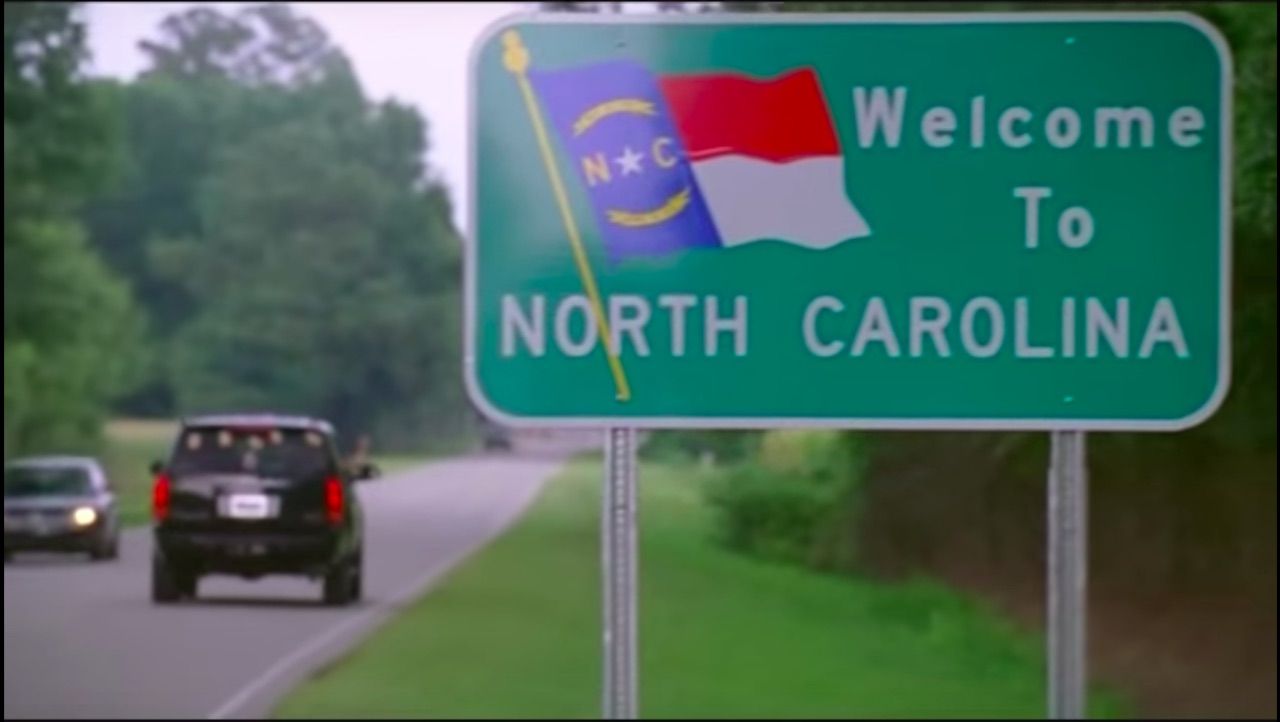
Photo: HBO
Kenny Powers could absolutely kick Gomer Pyle’s ass and wouldn’t even waste his time with those kids from One Tree Hill. The sheer disgusting magnetism of the washed-up pitcher who returns to his hometown to teach middle school PE is part of why America couldn’t get enough of this show over its four seasons. Powers’s no-filter arrogance makes him both entertaining and sad, a sympathetic jerk who you both love and hate within seconds. The show was produced by Will Ferrell, which explains much of the juvenile comedy. But also explains why we laugh at it anyway.
North Dakota
Fargo
FX, 2014-present
Much like the film it’s named after, much of the action in Fargo isn’t in North Dakota but rather next door in Minnesota. But when your cast features the likes of Billy Bob Thornton, Kirsten Dunst, Ted Danson, and Ewan McGregor, state line semantics can take a back seat. The dark comedy starts each season fresh, with new characters in a new time period and plot arcs revolving around a single crime and the storylines that develop from it. The first season earned an Emmy nod for best miniseries, and the upcoming 2019 season is rumored to star Chris Rock.
Ohio
Family Ties
NBC, 1982-1989
Another show that would find challenges airing today is Family Ties, which centered around a couple of ‘60s-era hippies Steve and Elyse Keaton and their conflicts with young Republican son Alex. It introduced us to Michael J. Fox three years before Back to the Future, earning him three Emmys for Outstanding Lead Actor in a Comedy Series. The show gained popularity because parents of the era could relate to the cultural divide with their more conservative children, and it still serves as an excellent window into the culture of the 1980s.
Oklahoma
Saving Grace
TNT, 2007-2010
Though this show didn’t last long it was likely TNT’s best attempt at a character-driven police drama, revolving around self-destructive OKC detective named Grace and her guardian angel, Earl. Holly Hunter, who does as much with this role as she has with any, wonderfully plays Grace, and Leon Rippy’s Earl is both hilarious and touching. The angel tries to help Grace out of her bouts with booze and one-night stands, sometimes successfully, sometimes not. The show skirted the line of getting preachy but stopped just short enough to stay entertaining. Watch it with an open mind and it’ll raise some interesting questions about faith in modern society.
Oregon
Portlandia
IFC, 2011 – 2018
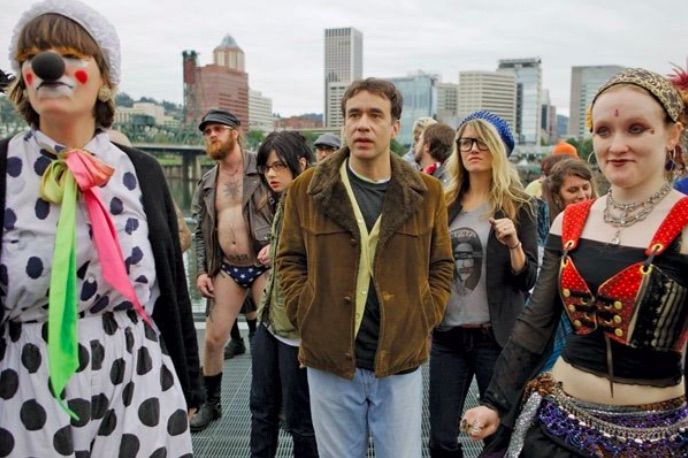
Photo: IFC
No show has sent up a city better than this offbeat sketch comedy show, which pokes fun at Portland. Classic sketches include an entire tent city based around a brunch line, a couple traveling from their lunch spot to a farm to see how humanely their chicken was raised, a feminist bookstore, an eccentric mayor, and pretty much all the city’s quirks taken to an extreme. Most characters are played by comedian Fred Armisen and Carrie Brownstein, though guest stars have ranged from Jack White to Roseanne Barr. It’s another in the long line of Lorne Michaels’ sketch comedy masterpieces, and probably his most ambitious.
Pennsylvania
It’s Always Sunny in Philadelphia
FX, 2005-present
Proving once again that the more people you offend, the more you can get away with, this series set in a Philadelphia dive bar — run by the worst people you’ve ever met — brings almost weekly plotlines of the incomprehensibly awful. Marketing the bar to teenagers? Check. Dressing up as cops to rob people? Absolutely. Breaking a former preacher and selling him to the mob doesn’t even seem so bad when you remember The Gang burnt all their enemies alive on Thanksgiving. And you know what? It’s never not funny. Though a couple seasons in the middle had us thinking the show had jumped the proverbial shark, its recent episodes have firmly redeemed it as the best show ever set in Pennsylvania.
Rhode Island
Family Guy
Fox, 1999-present
The humor on Family Guy runs a bigger gamut than perhaps any show in history, switching between obvious fart jokes and references to William Faulkner sometimes in consecutive cutaways. That style of cutaway humor has introduced younger audiences to pop culture of the ‘70s and ‘80s but also earned the show its critics for forging the humor from irrelevant jokes. No matter your views, Family Guy has been a cultural staple for 20 years, combining unique characters like a pseudo-intellectual talking dog, a devious talking baby, and a blue-collar New England loudmouth dad for the best animated ensemble cast of all time.
South Carolina
Vice Principals
HBO, 2016-2017
When we heard the creators of Eastbound and Down were making an entire show about ineffective high school vice principals in the south, we knew it would be comic gold. Danny McBride — who played Kenny Powers — co-created and starred in this show, which chronicles two unlikable and devious vice principals as they attempt to take down their newly appointed principal, Dr. Belinda Brown. For a year they develop often-despicable schemes to get her fired, ending in everything from injury to personal embarrassment. Vice Principals gave us some of the best characters on television for a couple of seasons, but as it had only been planned to run for 18 episodes, it was brilliant yet brief.
South Dakota
Deadwood
HBO, 2014-2016
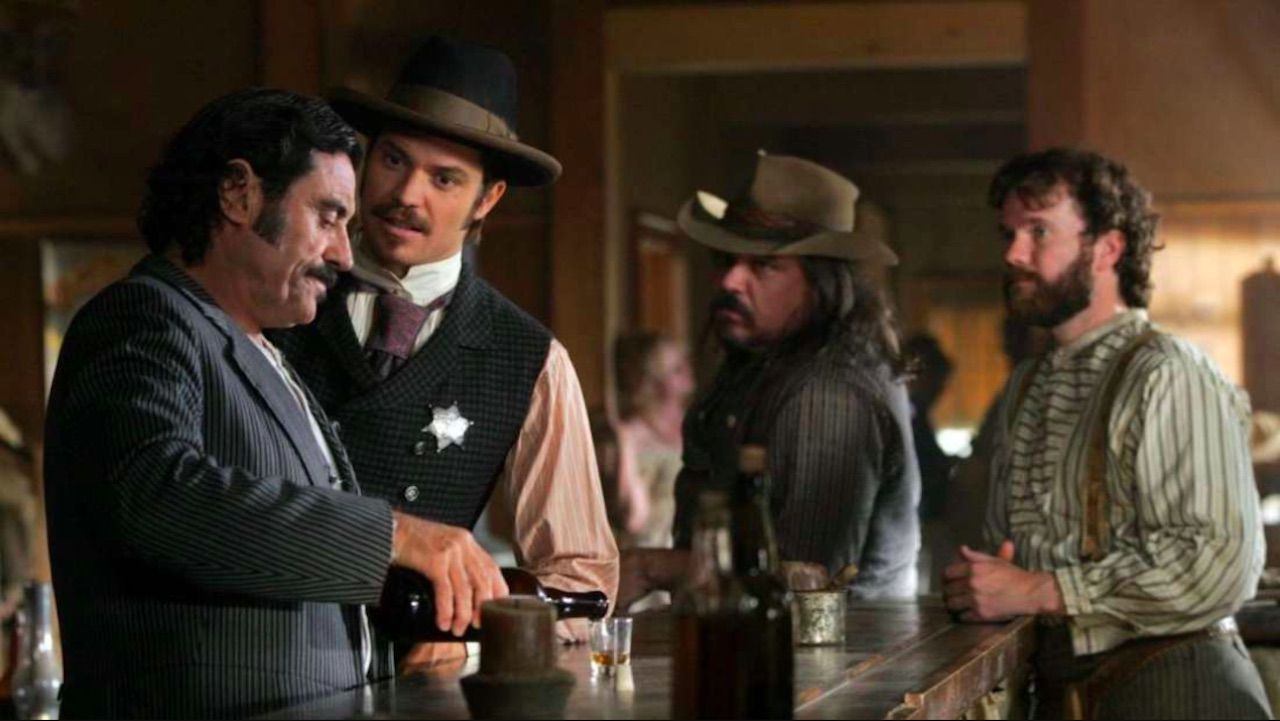
Photo: HBO
This western drama might have been the best underwatched show of all time, a masterfully acted piece of historical fiction based on real diaries from Deadwood settlers in the 1870s. The show saw a revolving saloon door of dead celebrity guest stars, from Wyatt Earp to Wild Bill Hickock to Calamity Jane. In two seasons Deadwood racked up 28 Emmy nominations and eight wins including Best Directing for Walter Hill. Though it only lasted two seasons, it grew great critical acclaim and birthed a massive tourism interest in the real-life town set in South Dakota’s Black Hills.
Tennessee
Nashville
ABC/CMT, 2012-2018
The sad, cyclical, unscrupulous world of the music business was laid bare in this series that followed country music musicians as their careers fell, rose, and fell again. The story begins with aging legend Rayna James butting heads with up-can-coming star Juliette Barnes, who feud over more than their predictable difference in styles. James fades away after a few seasons leaving Barnes on top, who eventually begins to see her career take a dive as a new up-and-comer takes her place. It wasn’t the deepest writing on the planet, and it didn’t rack up too many awards. But for pure evening soap opera entertainment, it was fun to watch.
Texas
King of the Hill
Fox, 1997-2010
Beavis and Butthead creator Mike Judge wanted to do more to chronicle the hot, stagnant feel of life in a midsized Texas city than showcase a couple of bumbling teenage metalheads. So he gave us Hank Hill, a caricature of a conservative Texas dad. Hank and his family live in the fictional town of Arlen, where football and barbecue are kings, and the good, honest work of a propane salesman is enough to get by. His neighbors and family are all quintessentially Texas, whether it’s the mumbling playboy Boomhauer or the Laotian family next door. Even if you’re not from the Lone Star State, you can still appreciate the nuances that make this the most Texas show of all time.
Utah
Big Love
HBO, 2006-2011
Just so we’re clear, the Mormon church ended the practice of polygamy in 1890. Does that stop people from making jokes or, in this case, an entire five-season TV shows about it? Absolutely not. Which is part of why Big Love was such an instant hit when it debuted right after The Sopranos in 2006. The show follows fundamentalist Mormon Bill Henrickson and his three wives as they try and conceal their alternative (and illegal) lifestyle in a Salt Lake City suburb. Of course, they’re outed early on and get into a number of ventures from running a casino to running for public office. It holds a lot more suspense than you’d expect from a show about people who don’t drink, earning itself an Emmy nomination for Outstanding Drama Series.
Vermont
Newhart
NBC, 1982-1990
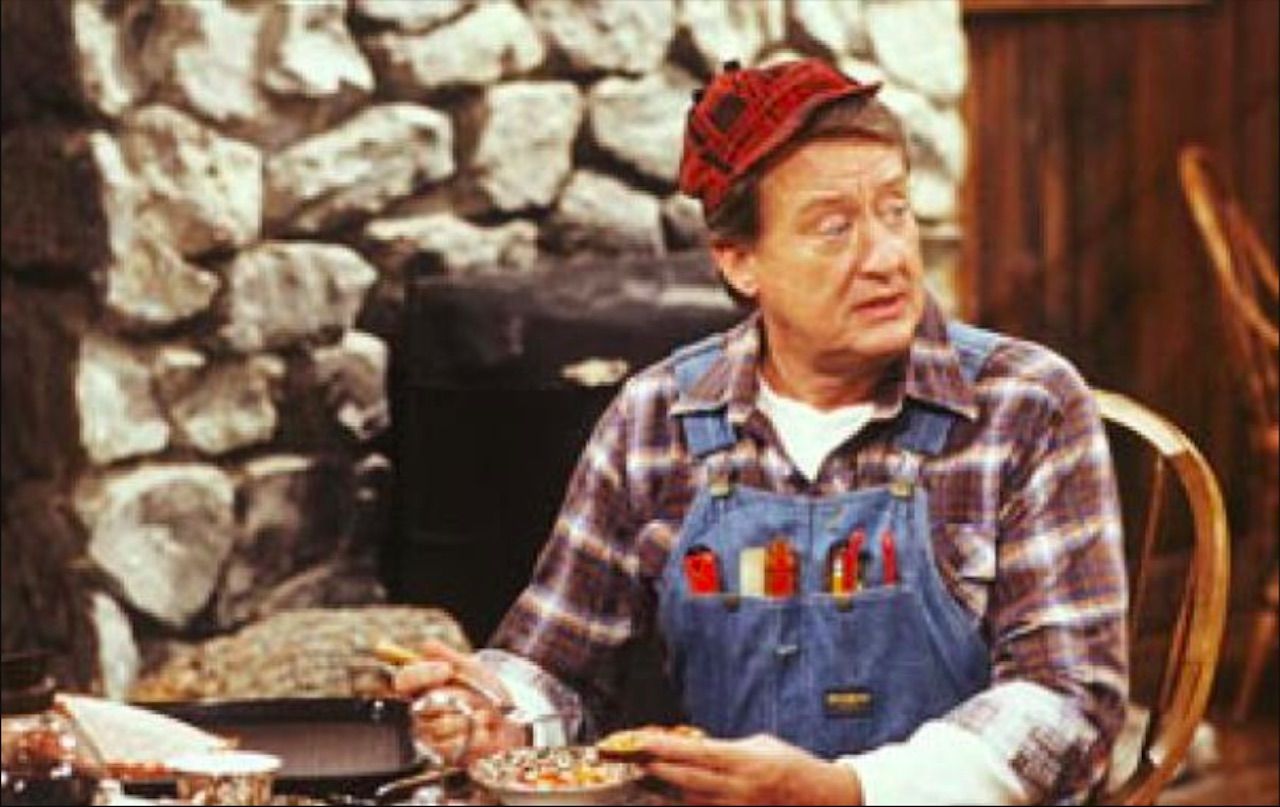
Photo: NBC
Bob Newhart might have been the best stand-up comedian of the 1950s and 1960s, but by the time the ‘80s rolled around, few younger people knew who he was. Until this show about a couple running a small inn in rural Vermont. The show was full of Newhart’s deadpan, facial-expression hilarity and quirky characters (including the famous Daryl brothers). But it might be the only show known more for its finale than its body of work, ending with Newhart waking up in his old Bob Newhart Show in bed with his wife Emily, purporting the whole run of Newhart had been a dream emanating from the previous series.
Virginia
Criminal Minds
CBS, 2005-present
Birthed in the heyday of the forensic procedural drama, Criminal Minds took the crime-investigation-solution formula and made it juuuust a little creepier. Where most shows either had victims who were already dead, or sometimes saved, the poor people kidnapped at the beginning of an episode of Criminal Minds rarely made it to the end, usually suffering some demented, sadistic fate that we all got to witness on TV. What we’re saying is, don’t watch this show before bed. But do watch it if you’re a fan of psychological dramas that sometimes don’t have happy endings.
Washington
Twin Peaks
ABC, 1990-1991
For nearly a year, the question on the lips of every TV-watching American was “Who killed Laura Palmer.” It was the “Who shot JR?” of its day, and had social media existed in 1990, it would have been all you saw in your feeds. The David Lynch series was quintessentially creepy, borrowing on bizarre, northwest characters; a gloomy backdrop; and a little bit of the supernatural to tell the story of FBI Special Agent Dale Cooper investigating Palmer’s murder. Of course, the inherent problem with a show based on a murder is once it’s solved, people lose interest. So despite the shows eccentric draw once Laura’s murder was solved — rather unsatisfyingly — ratings took a dive, and its eventual reboot received mixed reviews.
Washington, DC
The West Wing
NBC, 1999-2006
If you had asked us in 2013, hands down we would have said House of Cards, one of the OG Netflix series that showcased a despicable, yet probably accurate, depiction of the underhanded, unscrupulous politics of Washington through the eyes of murderous president Frank Underwood and his equally devious wife (and eventual president) Claire. But even before Kevin Spacey’s fall from grace after sexual assault charges and subsequent removal from the show’s final season, House of Cards never really lived up to its game-changing first season. What does stand the test of time is Aaron Sorkin’s myopic, feel-good and fast-paced presidential fantasy, The West Wing.
Martin Sheen’s President Josiah Bartlett became every wide-eyed Democrat’s dream leader (remember, this show aired primarily during the George W. Bush years and had to indirectly touch on the events of 9/11), and his press secretary CJ Cregg launched Allison Janney into icon status (she won four Emmys for the role). Sure, the The West Wing was basically liberal porn and everyone was unrealistically quick-witted, but it was educational for many, had one of the most likeable ensemble casts, and gifted television with the trademark “walk and talk.”
West Virginia
Outcast
Cinemax, 2016-2018
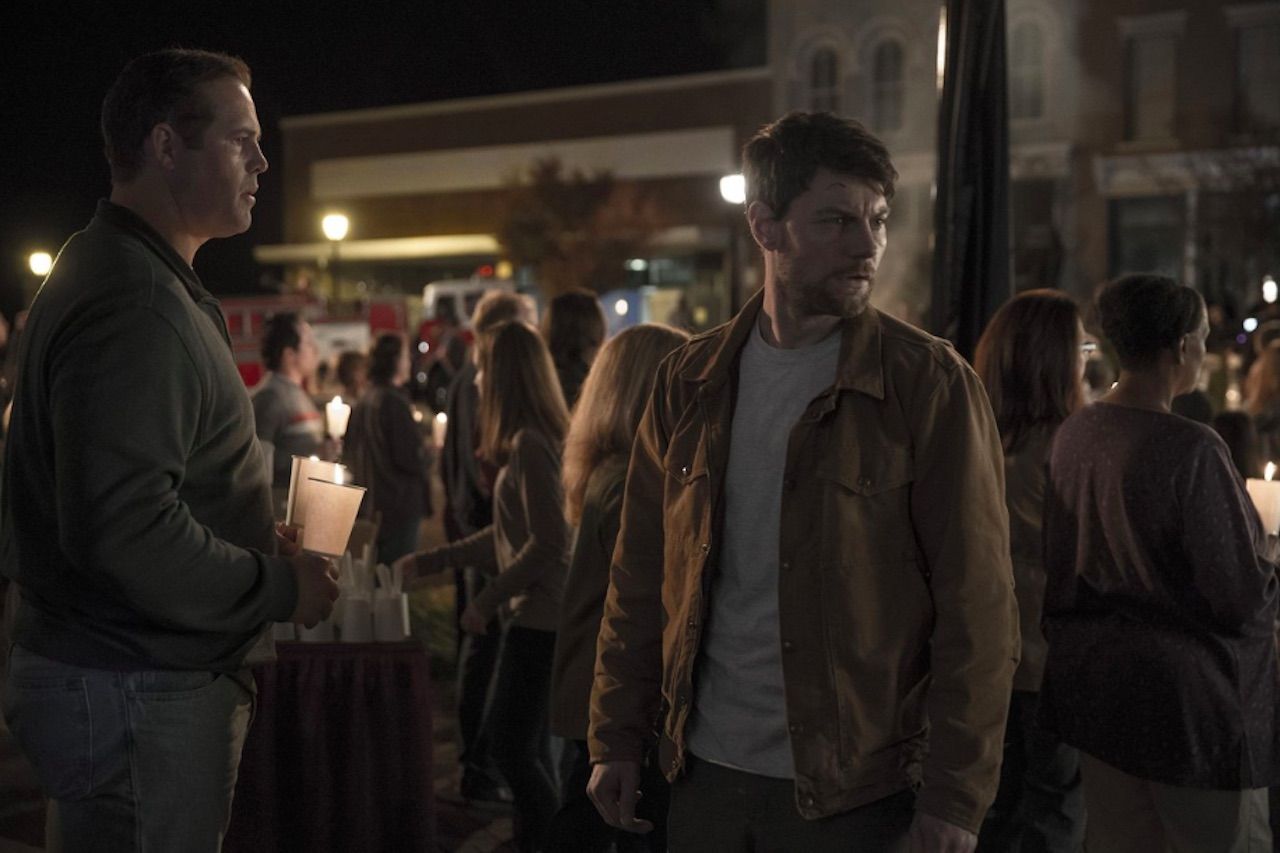
Photo: Cinemax
Leave it to West Virginia to have its best show air on a network known for late-night, soft-core adult features. Outcast, however, was not about skin at all, rather a live adaptation of a comic book series of the same name. The plot revolves around the town of Rome, West Virginia, where demonic possession seems to be abnormally high. The protagonist, Kyle Barnes, has fought possession himself and helps locals who are suffering the same curse. Despite pretty solid critical acclaim, it apparently lacked the elements a Cinemax program needs for success and only lasted two seasons.
Wisconsin
Picket Fences
CBS, 1992-1996
Though the lovably funny Happy Days and That ‘70s Show were far more successful and launched far more careers, the four seasons of Picket Fences were some of the best network television ever created. In Tom Skerritt’s most notable role since Viper, he plays Rome, Wisconsin Sheriff Jimmy Brock, who presides over a small town where bizarre, socially provocative crimes happen nearly every week. Though Picket Fences always drew a little on the supernatural, it was at its best when it handled sensitive issues like gay adoption and transgendered people. A career-killing Friday night time slot made this a perpetual ratings dog, but its 14 Emmy awards — including two for Outstanding Drama Series — kept it on the air for most of the mid-’90s.
Wyoming
Longmire
A&E, 2012-2017
The revival of the Western television show is long overdue, but this solid A&E drama set in northeast Wyoming was a good start. It follows the classically brooding Sheriff Walt Longmire, who presides over Absaroka County with a cowboy hat and a shotgun like it was 1890. The recently widowed sheriff is quiet and strong, revealing later he may or may not have killed his wife’s murderer with help from his Cheyenne Indian pal Henry, played by Lou Diamond Phillips. Longmire was filled with sweeping shots of the vast land of Wyoming, and for a brief stint this decade, it reminded us why we fell in love with westerns 50 years ago.